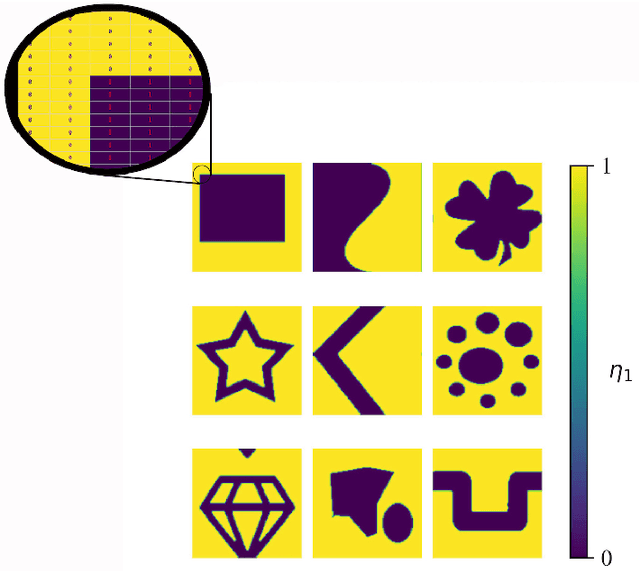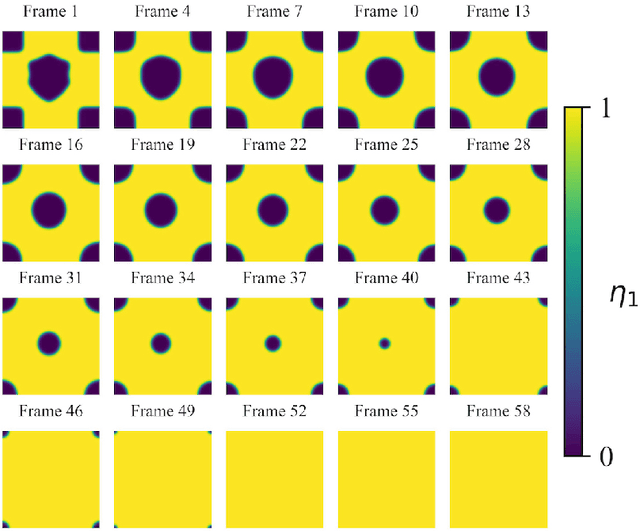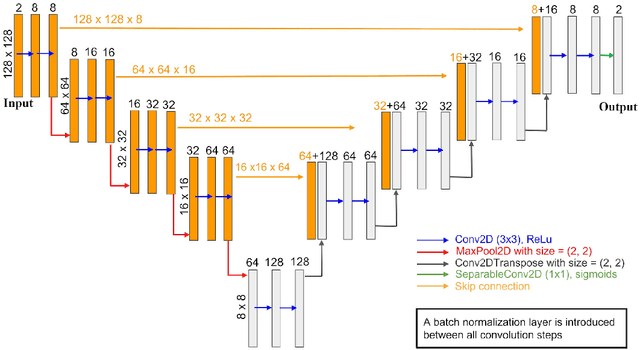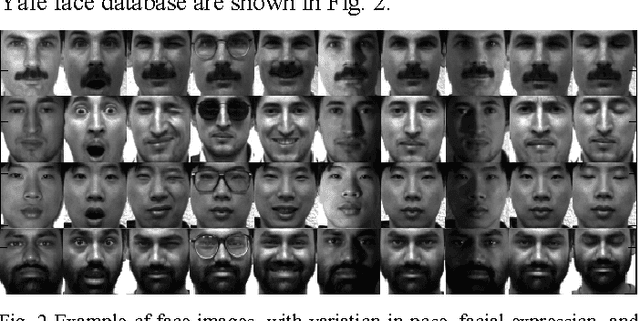Reza Ghaderi
Accelerating phase-field-based simulation via machine learning
May 04, 2022



Abstract:Phase-field-based models have become common in material science, mechanics, physics, biology, chemistry, and engineering for the simulation of microstructure evolution. Yet, they suffer from the drawback of being computationally very costly when applied to large, complex systems. To reduce such computational costs, a Unet-based artificial neural network is developed as a surrogate model in the current work. Training input for this network is obtained from the results of the numerical solution of initial-boundary-value problems (IBVPs) based on the Fan-Chen model for grain microstructure evolution. In particular, about 250 different simulations with varying initial order parameters are carried out and 200 frames of the time evolution of the phase fields are stored for each simulation. The network is trained with 90% of this data, taking the $i$-th frame of a simulation, i.e. order parameter field, as input, and producing the $(i+1)$-th frame as the output. Evaluation of the network is carried out with a test dataset consisting of 2200 microstructures based on different configurations than originally used for training. The trained network is applied recursively on initial order parameters to calculate the time evolution of the phase fields. The results are compared to the ones obtained from the conventional numerical solution in terms of the errors in order parameters and the system's free energy. The resulting order parameter error averaged over all points and all simulation cases is 0.005 and the relative error in the total free energy in all simulation boxes does not exceed 1%.
ECOC-Based Training of Neural Networks for Face Recognition
Dec 14, 2013

Abstract:Error Correcting Output Codes, ECOC, is an output representation method capable of discovering some of the errors produced in classification tasks. This paper describes the application of ECOC to the training of feed forward neural networks, FFNN, for improving the overall accuracy of classification systems. Indeed, to improve the generalization of FFNN classifiers, this paper proposes an ECOC-Based training method for Neural Networks that use ECOC as the output representation, and adopts the traditional Back-Propagation algorithm, BP, to adjust weights of the network. Experimental results for face recognition problem on Yale database demonstrate the effectiveness of our method. With a rejection scheme defined by a simple robustness rate, high reliability is achieved in this application.
 Add to Chrome
Add to Chrome Add to Firefox
Add to Firefox Add to Edge
Add to Edge